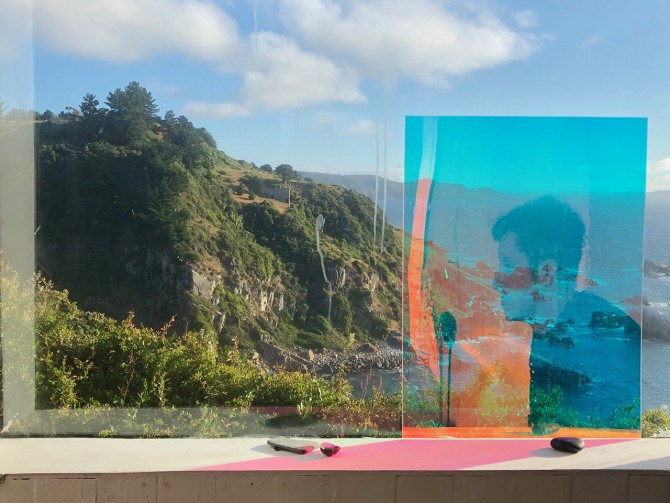Architecture, art alumni complete new Casapoli Residency
By Edith Fikes
Brian Havener, M.Arch. ’17, and Pauline Shongov, B.F.A./B.A. ’18, recently spent a month at Casa Poli on the Coliumo Peninsula, Chile, as the recipients of the 2018-19 Casapoli Residency.
Sofía von Ellrichshausen and Mauricio Pezo, professors of the practice in the Department of Architecture, saw their design for the house completed in 2005. The international artists’ residency program they conceived for the site was extended to recent architecture and art graduates at Cornell in December 2018.
The inaugural artists-in-residence were asked to consider the building's extremely remote location, as well as ideas around plurality and multiplicity that define the Casapoli project as a whole, as they furthered existing lines of research or initiated new trajectories for their creative work.
“Our interest was to select either two graduate or recently graduated students – one from art and one from architecture – who would create work synergistically in relation to one another, to the house, and to the magnificent natural elements surrounding the house,” said Andrea Simitch, professor and chair of architecture. “I think the residency is an exciting initiative for the departments and the college, and of course for the students who dedicate themselves to a month of thorough reconsideration of their creative practices in such an incredibly unique place.”
Havener is a teaching associate in the Department of Architecture. He also works in Cornell’s Robotic Construction Laboratory and continues his research on the potential of transparency, reflection and projection as they relate to the construction of perception in architecture.
“I’m not sure that I’ve ever been able to think as clearly as I did while I was in residence at Casa Poli,” Havener said. “We kept the house open to the rich landscape of the surrounding peninsula, which filled the house with the perpetual sounds of the waves, wind and birds. I arrived with some vague ideas of what I might work on for the residency, but as I spent time there and contemplated the space, plans evolved.
“The presence of Casa Poli is so strong,” he said, “that ultimately the work culminated in a radical documentation of existing spatial conditions seen through the lens of the surrounding environmental forces.”
Shongov attended the residency between terms of graduate study at Harvard University, where she is a first-year Ph.D. student in film and visual studies. Her work investigates the aesthetics and history of silent film; her creative practice often involves questioning relationships between texts, images and objects.
“Casa Poli gave me much needed stillness to make and introduced a new measurement of time – time out of time, a continuous pause that cycles in and out of light,” Shongov said. “The space very much teaches one how to coexist in it both visually and sonically, leaving very little room for language. This distance between the image and its verbal register I found to be a very special experience.”
Havener and Shongov will present the work they produced at Casa Poli on April 12 at 5 p.m. in Milstein Auditorium.
The 2018-19 jury for the inaugural residency included von Ellrichshausen, Simitch and art department chair Michael Ashkin.
Edith Fikes is a design and communications assistant at the College of Architecture, Art and Planning.
Media Contact
Get Cornell news delivered right to your inbox.
Subscribe

